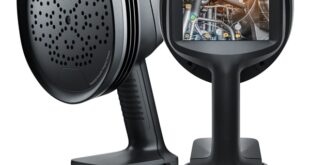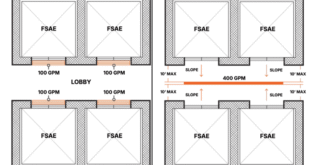The Pentagon recently announced a new policy to dramatically increase the use of small, single-use drones, treating them as expendable assets, like ammunition. As the U.S. military looks to expand its drone capabilities, another important consideration is the batteries that will power these devices. Here, Bruce Parkinson explores how modern-day drone manufacturers now have more choice when selecting a power solution
Single-use drones are typically treated as expendable and may not return from their first mission; therefore, they do not require a rechargeable battery. In the 1940s, when early versions of single-use drones were first developed, non-rechargeable battery technology was still in its infancy and alkaline chemistry had just been invented.
Alkaline batteries have a lower energy density compared to modern lithium alternatives. In single-use drones, the energy required for power-intensive systems, such as guidance, navigation, and communications, must be compact and efficient. Therefore, the low energy density of alkaline batteries was a significant disadvantage. Alkaline batteries also did not perform as well in extreme temperatures, which was problematic for drones that operated in hot or cold climates or at high altitudes.
Today’s lithium-based non-rechargeable batteries not only address these issues, but they can even power the propulsion systems of single-use drones, this is still very rare. As in the 1940s, non-rechargeable batteries are mainly used to power radio control systems and flight stabilisers, but modern drones also feature additional sensors that require more power.
A balancing act
Every single-use drone must strike the right balance between power output, capacity and weight. Capacity refers to how much energy the battery holds — and therefore, how long the drone can operate — while power output refers to how quickly that energy can be delivered. A higher capacity facilitates longer missions, but adds weight, which can compromise flight performance or payload allowance. On the other hand, batteries that deliver high current may be bulkier or have lower energy density.
Battery manufacturers will often perform tests on their batteries to demonstrate these capabilities. We recently tested our D-size non-rechargeable cell, the U10026, to prove its suitability for single-use drones. The tests proved that the cell could deliver up to 20 amps continuously with proper thermal management — a major improvement from previous expectations of 3 amps. Even at 10 to 15 amps continuous, these cells performed well under air-cooled conditions. This unlocks new possibilities for applications that demand uncompromising energy performance.
Modern choices of battery
Non-rechargeables such as the U10026 can carry significantly more capacity than similarly sized rechargeables, enabling them to support heavier loads or extend range, even in compact airframes.
Meanwhile, in multi-mission, non-expendable drones, rechargeable lithium-ion batteries have mostly replaced lead-acid to benefit from high cycle life and a moderate continuous output — ensuring reliable power in drones that carry out activities such as surveillance, mapping and routine site inspections.
The Pentagon is on a mission of its own — to make it easier for manufacturers to produce single-use drones on a larger scale. Against this backdrop, it is important to think about the power solutions behind this technology and how to balance weight, power output and capacity – all important considerations during deployment.
Bruce Parkinson is Applications Engineering and Inside Sales Manager at Ultralife Corporation.
 Engineer News Network The ultimate online news and information resource for today’s engineer
Engineer News Network The ultimate online news and information resource for today’s engineer


